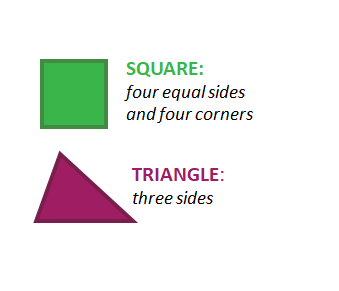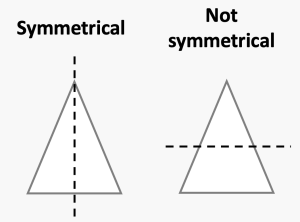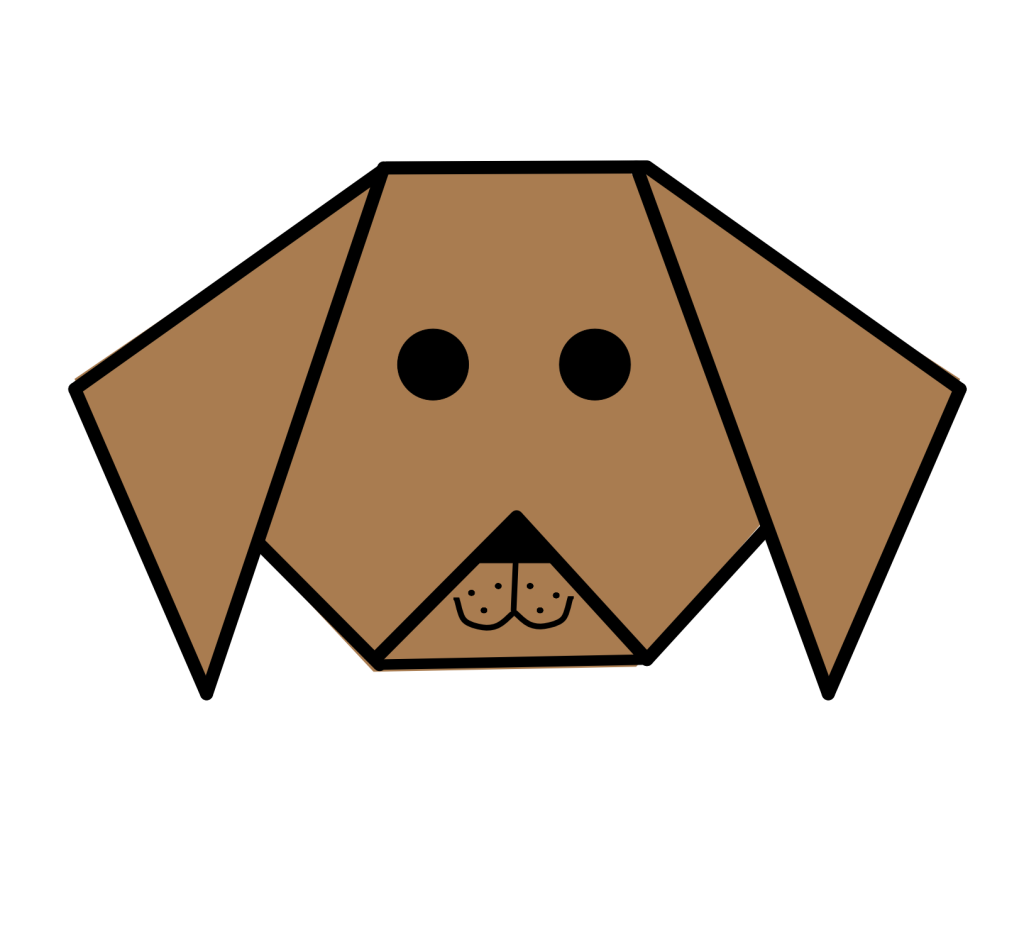Materials
- A pencil or crayon.
- 1 piece of square-shaped paper. If you don’t have square paper, you can fold and cut a rectangular piece of paper to make a square. Take one corner and fold it diagonally to the straight edge. Then trim the strip of paper on the bottom. You can also use a ruler to measure equal lengths on all four sides of the square.

Instructions

Step 1
Take the square paper and bring the TOP CORNER to the BOTTOM CORNER and fold so the EDGES touch. Ask: What shapes do you see? How are the squares and triangles different?

Step 2
Fold the TOP two CORNERS DOWN to make the dog’s ears.

Step 3
Make the nose by folding the BOTTOM CORNER UP.

Step 4
Finish your dog by drawing the eyes and the nose! Ask: What shapes do you see now? What’s the same and what’s different on each side of your dog?
Tips for Having Math Conversations

Doing origami helps children learn about math words that have to do with space and place (for example, top, edge, vertical, and center) and offers opportunities to notice and talk about shapes and symmetry.
EXPLORE SHAPES
- Find shapes as you fold the paper.
- Talk about the features that define shapes, such as how many sides they have.
- Talk about how shapes are the same and different.

EXPLORE SYMMETRY
- Discuss how folding sometimes creates two shapes that are the same, but other times creates two shapes that are different. For example, on a triangle, a vertical fold makes the left and right sides the same (symmetrical). However, a horizontal fold makes the top and bottom different (not symmetrical).
Activity Modifications
Once you have tried out the activity, here are some modifications you can do:
- Make It Easier: Adults can do the folding while children watch.
- Make It Harder: Try the origami ideas in this PDF.
